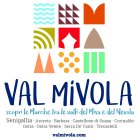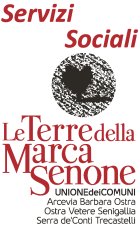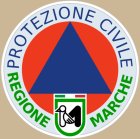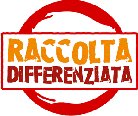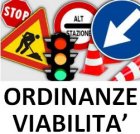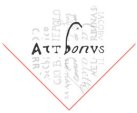Information on Ostra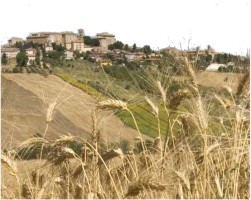
History
Ostra is located 193m above sea level, between the Adriatic coast and the Apennines. Tradition has it that Ostra comes from a Roman town having the same name, situated in the valley of the Misa river, which was destroyed by the Visigoths in 410 A.C. Actually, in a place called "Le Muracce", 9 km from the modern-day Ostra, it is still possible to see the ruins of that ancient settlement. According to legend those who survived the destruction fled to the surrounding hills. They eventually founded a new town on an hill belonging to a certain Bodio, a roman landowner. The town was named after Bodio Montalboddo. However, historical records prove that the land where Montalboddo was founded actually belonged, to the Exarchate of Ravenna. In 1194 Montalboddo appointed itself free city; in 1230 it broke free from Ravenna domination only to end up under the control of Jesi shortly afterwards. In 1320 Montalboddo yielded to the rule of the Paganellis, a noble family from Romagna which dominated the town for the whole century. Between the end of the 14th century and the first half of the 15th century a number of noble families followed each other at the rule of Montalboddo such as the Malatestas, the Montefeltros, the Ranieris and the Sforzas. In 1454 the citizens themselves made the town subject to the direct authority of the Church. The XVII and the XVIII centuries marked a long period of peace and prosperity in which the town renewed its architectural look. Many noble families rebuilt their palaces, many religious orders erected new convents and the citizens laid the foundations of the new Town Hall. Palaces and churches adorned themselves with paintings, stuccoes and artworks. As a result of such economic and social development Pope Pious VI granted to Montalboddo the status of Città in 1790. On April 5 1881 the Town Council resolved to change the town name from Montalboddo to Ostra in order to re-establish its ancient designation. In the twentieth century Ostra lived through Italian state affairs as best as possible, it suffered through the two world wars, the Italian Resistance and fratricide, up until newfound freedom, which still today bestows the town with a certain well-being and prosperity. So, modern day Ostra considers its future optimistically without forgetting its intrinsic roots.
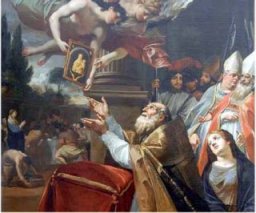
Arts & Attractions
Ostra's centuries-long history has left the town a rich artistic and cultural heritage. The "Monumento al nome e allo stemma di Ostra" (Monument to the name and coat of arms of Ostra), made up of a granite column taken from the original settlement, is an evidence of its roman origin. The Cinta Muraria (City walls) (XIV century), whose difensive purpose is testified by its 9 watchtowers (of whom the "Torrione di Mezzogiorno" -Tower to the south- is the best preserved), dates back to the Middle Age. Such towers space out the whole perimeter of 1,200 meters. The upper town - where a fortress was once located - is the original settlement, characterized by narrow and winding alleys. Unfortunately, no traces of the fortress are left today except in the toponymy (Vicolo della Rocca - Fortress alley). The lower town, developed around the "Collegiata di Santa Croce" (Collegiate church of the Holy Cross) at the end of the XIII century, is the more recent district. Its distintive features are wider and more symmetric streets from which a thick net of regular alleys branch off. The main square, called "Piazza dei Martiri" (Martyr's square), joints the upper town to the lower town. The neoclassical building "Palazzo Comunale" (Town Hall - 1749) - which houses the theatre "Teatro della Vittoria" (1863) - and the "Torre Civica" (Civic Tower), erected in the XVI century as a bell-tower and restored in 1950, dominate the square. Next to the tower you will find the "Palazzo Gherardi-Benigni-Censi" (XVIII century). Whereas opposite the tower the "Church of S. Francesco" is located. The church was built in 1283 and modified through the years up to the construction of a portico (1881) along the façade of the church used for the weekly covered market. It contains a chapel to Saint Gaudenzio, patron of the town, painted by Giovanni Bellini as well as two paintings by Ercole Ramazzani. The church is annexed to the monumental "Palazzo dei Conventuali" (Palace of the Convent Fathers - XVIII century) through a cloister. At present this former Franciscan monastery houses the Main Library, the Town Archives and the Civic Museum. The two main streets that start from the square, "Via Gramsci" and "Corso Mazzini", are lined with elegant church façades and residences of the nobility dating back to the XVIII century. Among the nobles' residences we mention: "Palazzo Menchetti" where the historian Andrea Menchetti (1871- 1937) lived, "Palazzo Cherubini" embellished by exquisite stuccoes, "Palazzo Sanzi-Pericoli" whose rooms are decorated by the well-known artist Samoggia and "Palazzo Gabuzi-Fedeli-Luzi" which boasts wrought-iron railings of delicate workmanship. Among the places of worship the following are noteworthy: "Church of S. Filippo Neri" (1781) with an altar-piece portraying the "TRANSITO DI S. GIUSEPPE", painted by Claudio Ridolfi. The above-mentioned "Collegiata di Santa Croce", built in 1852 on the ruins of a Cistercian abbey which dated back to the XII century. The Collegiate church houses paintings by Claudio Ridolfi and frescoes by Cattaneo and Galimberti. The "Sanctuary of the Crocifisso" (1333), adorned by roman and gothic arches above its portal, contains an impressive wooden sculpture, the "Cristo agonizzante" (Christ in agony) by Bartolomeo Silvestri from Verrucchio. The "Church of S.Rocco", built in 1527 as a votive offering against the Black Death (the plague), was eventually annexed to the Clarisse convent in 1545 but still holds artworks by Giacinto Brandi and Pietro Cortona as well as an organ assembled by Gaetano Callido in 1771. The "Sanctuary of Madonna della Rosa" (1754) and that of "S. Maria Apparve" (1900) are located close to the old town centre. The former holds a portrait of the Virgin Mary deemed dispenser of miracles and a rich collection of votive tablets. The latter was built on the ruins of a Renaissance church dedicated to the cult of the Virgin venerated in the past during epidemics.
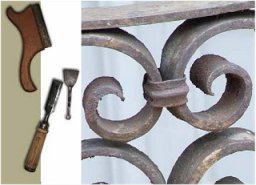
Handicrafts
Up until about 50 years ago, in the town council of Ostra, particularly around the town itself, the fundamental elements of the fabric of society and economic activity were mainly family run handicraft workshops. There was such a creative, ingenuous and hard working atmosphere in the workshops, where apprentices gradually acquired the little secrets of their master craftsmen, that items produced sometimes reached the levels of fine art works. It is important not to forget the beautiful work that wise craftsmen knowledgably created and it would be better to follow up the local tradition that has always been so profitable and that still today preserves significant examples. The town centre, has gradually been deserted of local craft workshops, which have relocated. Now, there are a number of commercial services and an increasing network of places of tourist interest, making the most of the old town centre which offers visitors an impressive backdrop, with noble buildings of valued architecture, not forgetting the museum which houses significant local artistic wealth. The Ostra territory is therefore, nowadays, a mixed economy, which is aiming more and more at integration between the various sectors. In particular, regarding
tourist promotion, improving tourist accommodation and promoting the local food and wine resources, appreciation of architectural, historic buildings and the local countryside, and thus confirming the "European Orange Flag" award. Cultural events are not missing, there is an eventful Summer calendar, supported by many local associations and an intensive theatre programme. There is also a diffuse network of agricultural activity, carried out with great passion and experience, producing specialities that still capture the authentic tastes of times gone by. Wines, including Verdicchio and Lacrima di Morro d'Alba, olive oil, mostly made of "raggia" olives, the typical local variety, cheeses, salami and cured meats and honey, are among the most widely available and prized products. It is this agriculture which makes the hilly scenery around Ostra, so full of colour and patterns, of unforgettable fascination where it is easy to let yourself discover the natural beauty that surrounds you and live, just for one second, in a world of poetry. |










